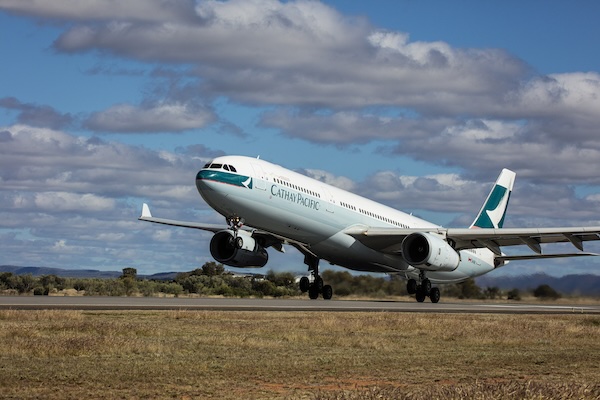Cathay Group is set to reintegrate the 85th aircraft, an Airbus A330, into its active fleet. This follows nearly four years of storage in the Australian desert during the pandemic.
The aircraft was the first to be grounded overseas in July 2020 as global air travel halted. Currently, it is back in Hong Kong undergoing comprehensive maintenance checks.
The decision to park the Airbus A330, along with many others, was a necessary response to the drastic reduction in air travel during the COVID-19 pandemic. Cathay Pacific and its regional arm, HK Express, had to manage their fleet strategically, utilising locations in Hong Kong, Alice Springs, and Ciudad Real. Each aircraft required regular preservation checks to maintain airworthiness, involving a 14-day initial preservation process followed by numerous periodic inspections.
A significant onsite quality assurance team was established, conducting more than 2,000 audits to sustain high standards. These audits were vital in affirming each aircraft’s condition in preparation for returning to service.
The complexity of these operations highlights the scale of Cathay Group’s commitment to reinstating its full fleet under precise safety conditions.
Cathay’s engineering operations were instrumental in executing these detailed protocols. The transition from parked to active status was managed with precision, ensuring that every aspect of the aircraft’s functionality was verified.
Bob Taylor, General Manager of Engineering Operations, emphasized the importance of these steps, stating that “a rigorous series of checks must be accomplished to ensure the aircraft is safe to ferry back from its overseas parking.”
This meticulous approach safeguarded both the mechanical integrity of the aircraft and the reputation of Cathay as a leading airline.
Chief Operations and Service Delivery Officer, Alex McGowan, expressed confidence in Cathay’s future, highlighting the company’s proactive stance towards new opportunities despite past challenges.
These investments reflect Cathay’s ongoing strategic initiatives, aimed at expanding its operational capacity and maintaining its competitive edge in the global aviation market.
The concerted efforts of teams across various geographies underscored the airline’s adaptive strategies and resilience in the face of a global crisis.
Such experiences have reshaped industry practices and underscored the importance of flexibility in fleet management.
Innovation played a crucial role in Cathay’s recovery efforts. The airline’s adaptation to new technologies and practices ensured continuity and safety throughout the storage and reactivation phases.
By integrating contemporary solutions, Cathay has enhanced its operational procedures, supporting its broader goal of achieving sustainable growth.
The successful return of Cathay’s 85th aircraft signifies a pivotal moment in its post-pandemic recovery. The strategic foresight and robust operational protocols implemented by Cathay have not only restored its fleet but also bolstered its future prospects.
As Cathay Group moves forward with a fully reactivated fleet, their strategic investments and innovations indicate a promising trajectory. The lessons learned during the pandemic have strengthened their resilience and adaptability, reinforcing their commitment to excellence in aviation.

